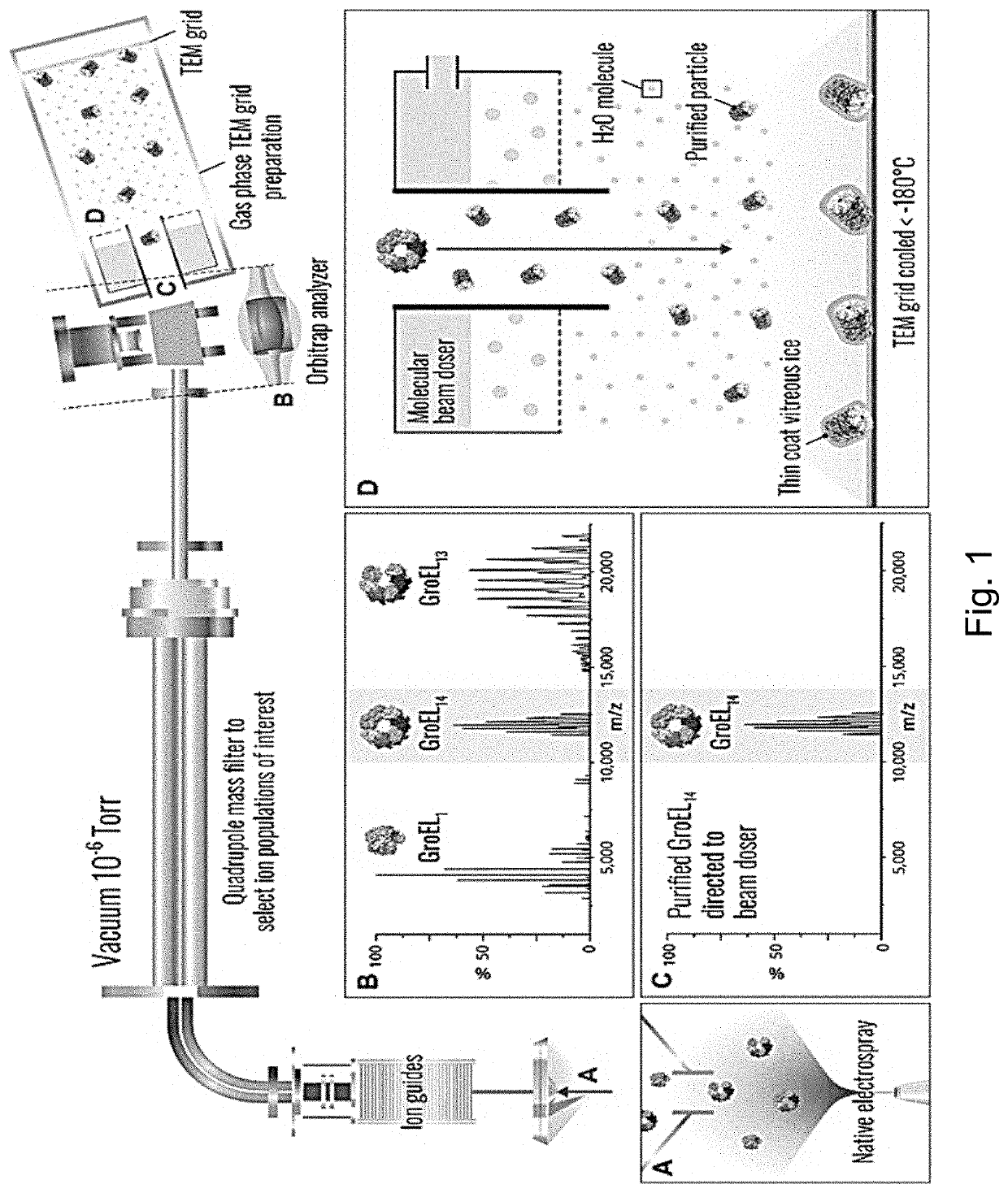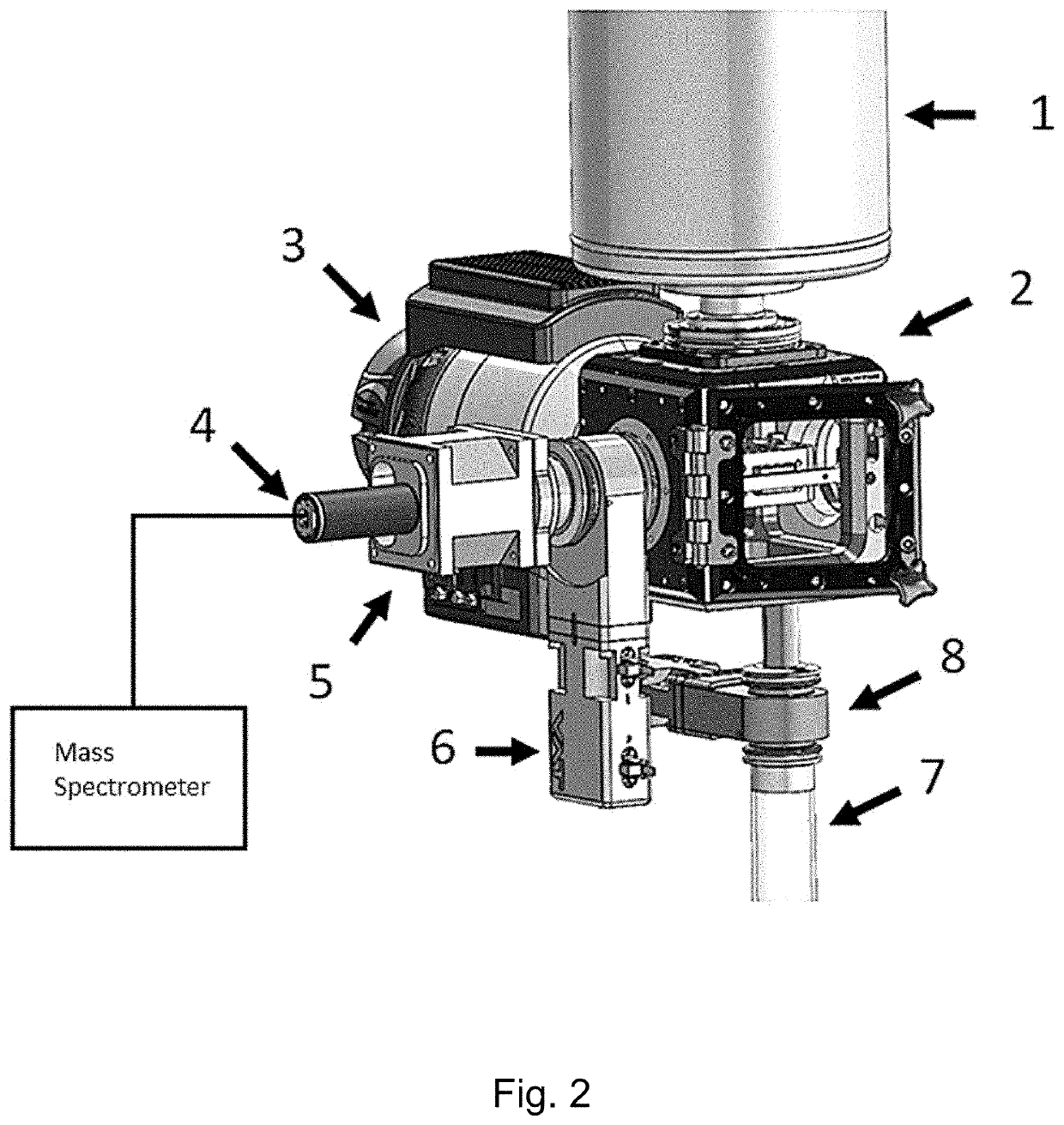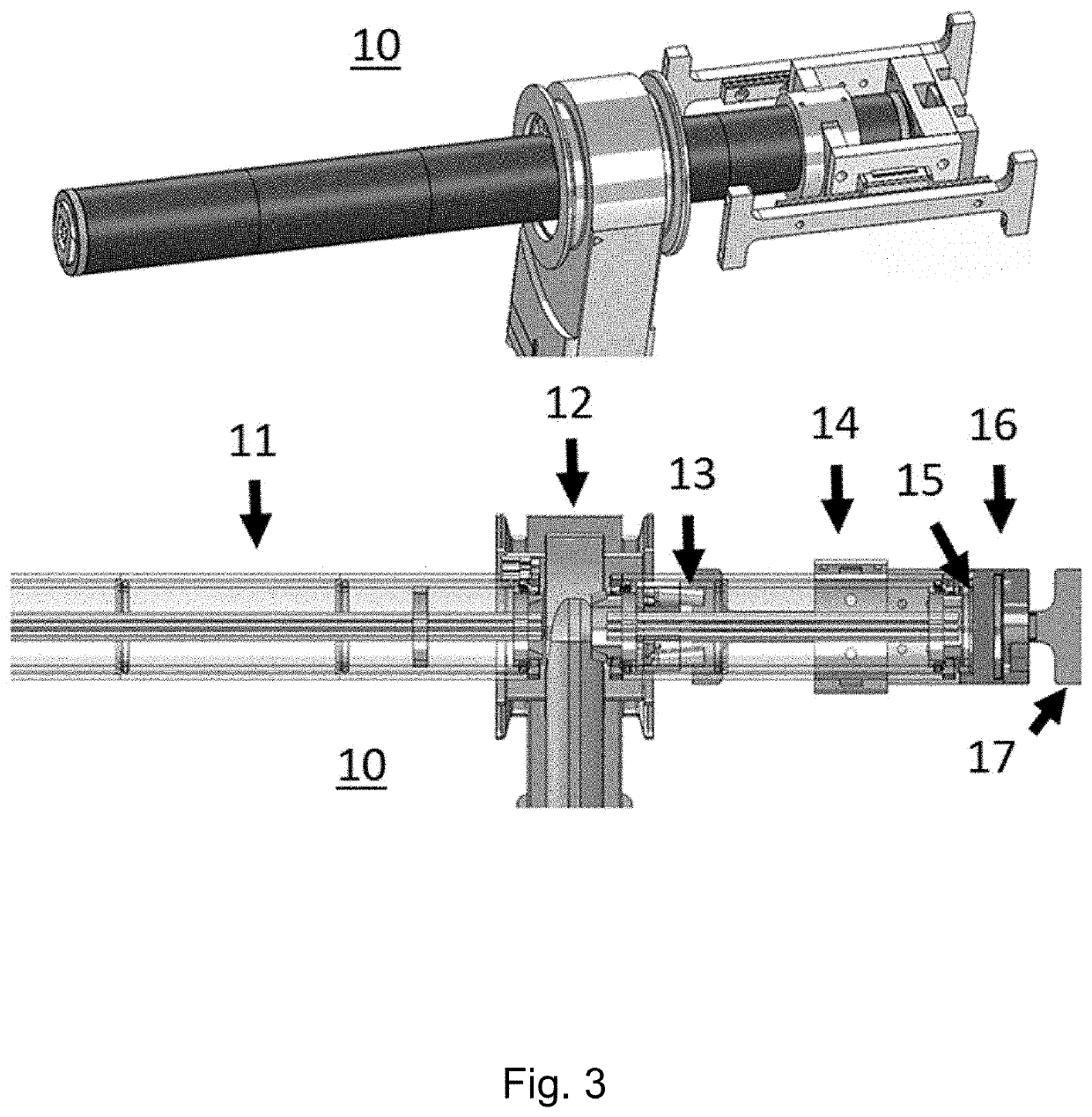Retractable Ion Guide, Grid Holder, and Technology for Removal of Cryogenic Sample from Vacuum
a technology of ion guide and grid holder, which is applied in the direction of electric discharge tube, particle separator tube details, particle separator tube, etc., can solve the problems of destroying the required structural heterogeneity, generating only a very few particles, and significant problems
- Summary
- Abstract
- Description
- Claims
- Application Information
AI Technical Summary
Benefits of technology
Problems solved by technology
Method used
Image
Examples
example 1
lar Vapor Deposition
[0057]In biomolecular vapor deposition (BVD), a mass spectrometry (MS) device is utilized with cryo-EM gas phase sample preparation in order to purify proteins and protein complexes in the gas-phase for subsequent in vacuo vitrification. Samples prepared in this way can be extracted from the mass spectrometer using the cryo-transfer sample holder and placed directly into an EM for imaging.
[0058]Gas-phase biomolecule freezing prior to surface deposition may be especially useful for fragile or flexible molecules, allowing the molecules to retain their condensed phase shape by removing as much of their energy as possible before they contact the grid. A common practice in the field of gas-phase IR spectroscopy, freezing biomolecules in the gas-phase can be accomplished through the use of supersonic beams, decelerated beams, cooled or slowed buffer gases, or cryogenically cooled ion traps, amongst other methods (see Rijus and Oomens, “Gas-phase it spectroscopy and str...
example 2
le Ion Guide
[0062]In one example of a successful BVD method, several key steps are performed. Firstly, biomolecular ions are transported from a mass spectrometer to a TEM grid cryogenically cooled to −185° C. During the collection of the particles onto the TEM grid, water vapor is introduced into the vacuum for ice formation. Once deposition of particles and ice on the TEM grid is complete, the chamber containing the grid is raised to a pressure where nitrogen will not sublimate and remain a liquid at −190° C. While maintaining a temperature below −175° C., the TEM grid is evacuated from the chamber into a storage container or transported directly to a cryo-EM instrument.
[0063]In this example, the instrument components used to remove the TEM grid are illustrated in FIGS. 2 and 3. The sample vacuum chamber 2 contains a chilling unit for the TEM grid which is cooled to −185° C. using circulating liquid nitrogen supplied by the large dewar 1. The sample vacuum chamber 2 is maintained a...
example 3
f the Grid from Vacuum
[0068]To remove a grid that has been prepared with amorphous ice and biomolecules according to the above examples, the grid is transported from a region of ultrahigh vacuum to an environment of liquid nitrogen without ever reaching a temperature greater than −170° C. or being exposed to water in the atmosphere. The removal process begins by retracting the grid ion guide 14 and cooling box 16 out of the path of the vacuum gate valve 12, at which point the vacuum gate valve 12 can be closed. The mass spectrometer vacuum region and sample vacuum chamber 2 are now effectively separated. To raise the pressure in the sample vacuum chamber 2, the vacuum pump 3 is switch off and pressure is elevated by pumping liquid nitrogen into this chamber.
[0069]While the pressure is low, the liquid nitrogen immediately turns into solid nitrogen which then sublimates into gaseous nitrogen. As the pressure elevates, the liquid nitrogen entering the sample vacuum chamber 2 remains in...
PUM
 Login to View More
Login to View More Abstract
Description
Claims
Application Information
 Login to View More
Login to View More - R&D
- Intellectual Property
- Life Sciences
- Materials
- Tech Scout
- Unparalleled Data Quality
- Higher Quality Content
- 60% Fewer Hallucinations
Browse by: Latest US Patents, China's latest patents, Technical Efficacy Thesaurus, Application Domain, Technology Topic, Popular Technical Reports.
© 2025 PatSnap. All rights reserved.Legal|Privacy policy|Modern Slavery Act Transparency Statement|Sitemap|About US| Contact US: help@patsnap.com



